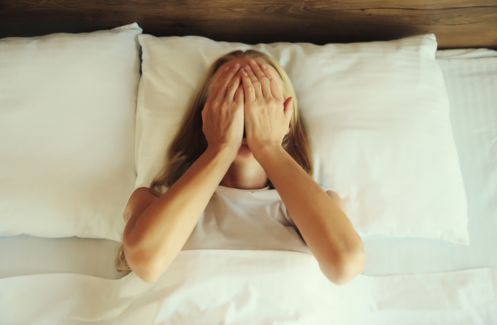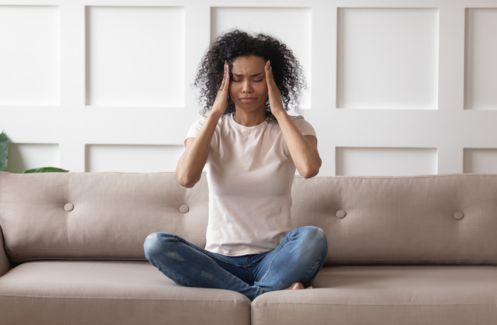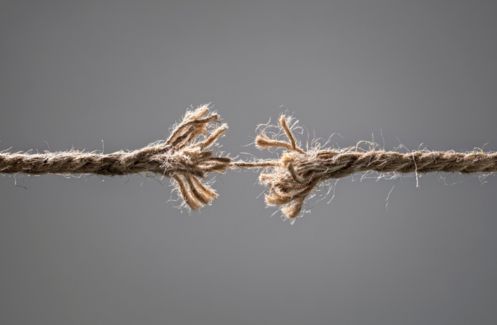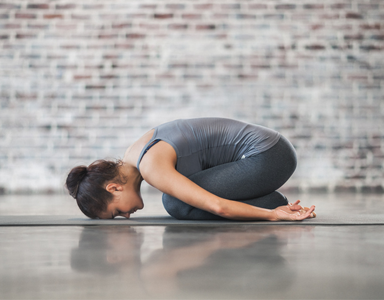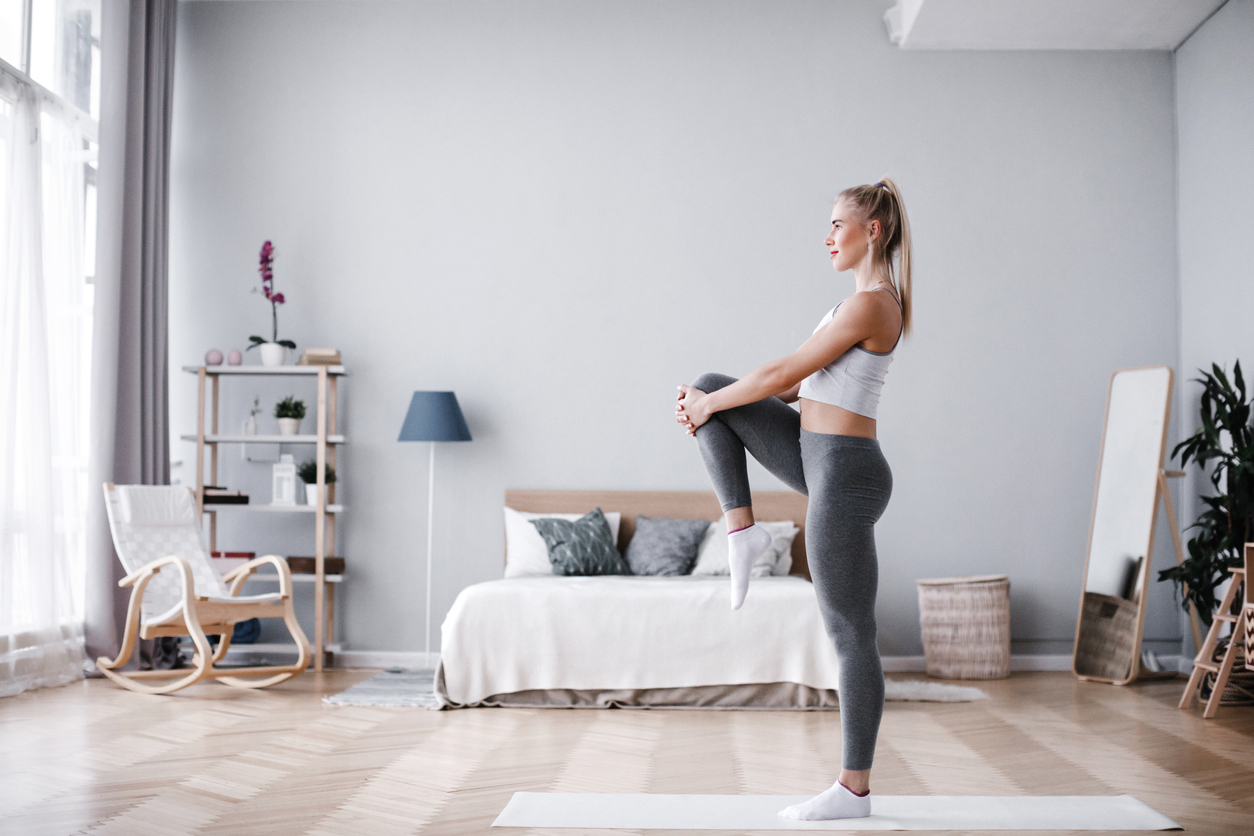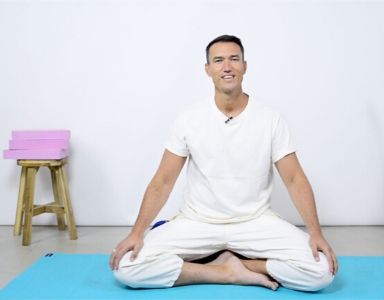
Name the aspects of life most of us have to deal with, most days. Relationships. Money. Work. Bosses. Family. Home. Friends. Bills. Health. I worried about all of them. Not now and then, but all the time. What I said, what I didn’t say, what I should have said, or could have said, what would happen or might happen.
Every waking moment there was a catastrophic film in my head. It left me in this just-in-case limbo of worrying about how I would control the worst-case scenario of everything: people I love dying, being old and penniless in a damp bedsit with only a cat, the abrupt end of my career, my friends deserting me. I’d wake up each morning with a sore jaw from grinding my teeth and often woke with a start in the small hours. I couldn’t go on a drive or night out with my husband without bringing up the fact that we didn’t have pensions and how that might leave us in a dirty NHS ward with MRSA in 2050. It was exhausting.
I sometimes throw self-help books across the room cringing at their promises to deliver a new me by tomorrow afternoon. But Stop Worrying by Professor Ad Kerhof (£9.99 McGraw-Hill) lured me for obvious reasons. A specialist in Cognitive Behavioural Therapy (CBT) at VU University Amsterdam, Professor Kerhof has a step-by-step self-help program based on daily exercises that have helped thousands of his clients stuck in what he called the ‘frozen state’ of chronic worrying. ‘Under normal circumstances, when people have a problem they think about it for a while, find a solution and move on,’ says Professor Kerhof.
‘But excessive worriers can’t control their thinking and so it becomes repetitive, incessant and completely unproductive,’ he asserts. ‘Thinking leads to solutions or recovery,’ says Kerhof. ‘Worrying leads to a frozen state between preparation and taking action. Thinking leads to the energy needed to make a move. Worrying leads only to tiredness.’ Requiring just ten minutes, twice a day, the programme involved no CDs or pony-tailed gurus, no affirmations or crystals. In fact, this exact four week program had been the subject of a clinical trial on 200 normal people who like me couldn’t escape from the Neanderthal doomsayer in their heads. The vast majority lowered their daily worrying by more than half. There is no Priory rehab facillity for worriers as there is say, for alcoholism or cocaine abuse. But this was affecting my life like a full-time addiction (according to Kerhof, worrying is addictive). Could just 10 minutes twice a day for four weeks really help?
Week One: The Worry Workout
The first exercise is the mainstay of the program: Controlled Worrying. Just like daily exercise, you set a time – ten minutes in the morning – to do nothing but worry intensely. This is liberating. I used to beat myself up for worrying, trying to do the mental gymnastics of making myself stop. That only made me worry more. Suddenly I had permission to worry. Brilliant.
Every morning I wrote down my worries in a little black worry book. At the beginning they were all the big things, no pension, my mum or sisters or husband dying, not having enough money for a comfortable old age, my clients suddenly hating me. But after the first couple of days, they became more specific and all had virtually the same sub-text. They were always questions – will my work be good enough? Why did I take this or that job on? What if this client hated the work? A friend had been having some health problems and my brain jumped to the worst case every time: What if it’s MS? What if it’s Huntingdon’s? What if? What if? What if? Like perfectionism (tick) and having demanding parents (hmmm, tick), control freakery is a typical characteristic of chronic worriers, according to Professor Kerhof.
For many, the overwhelming topic is the future and how we can control it. ‘It used to be that people worried predominantly about health but today, people’s main worry is the future,’ says Professor Kerhof. ‘Something which could happen next week or next year or a confrontation with a loved one tomorrow evening or a confrontation with an employer next month,’ he says. Plus, he says people worry about what’s most important for them. For some it’s family, for others its health. For me, it’s all of the above.
Week Two: Positive worrying
Each evening, there are simple exercises designed to distract me from worrying. For example, being mindful during an activity such as washing up, long, slow breathing or my favourite – positive worrying. When we worry it’s always negative, so it becomes a habit to default to negative thoughts. But during positive worrying you spend five minutes sitting still and thinking about a happy event. I think about my trip to Barbados in April this year. The texture of the clear water, the taste of mango daiquiri, the warmth of the atmosphere. You can also think about something you’re good at – anything – such as cooking a beef terrine, being a mum or running a company. It was like taking an emotional shower before bed.
Week Three: Tell someone
One of the key ways to deal with your worries is to tell someone about them. On the night my task was tell someone about my worries I had my friend Caroline coming over. I couldn’t do it. Even though she is a really close friend. I don’t think I will ever be able to sit a good friend down and tell them my worries. I would feel like such a weight. Maybe one day, not that day. Thankfully, you can do the same talking exercise in your imagination. Writing down your worries daily makes you identify their source. Mine is conflict. I hate it. That feeling that however small, things aren’t exactly just right makes me want to disappear. The problem with that is that things are never just right. There are always crises, so I was never happy.
But this week a number of crises hit, but I dealt with them and they didn’t sit on my shoulders like dead weights. I had a huge fight with my husband about going on holidays and one of my editors sent a story back for re-writing. Normally this would be take-it-personally, catatrophizing central for me. But I used my favourite of Kerhof’s tricks. When you catch yourself worrying, clap your hands and say the words, ‘Not now!’ to yourself. It’s like being back in 5th class with Sister Mary Joseph giving an order. I couldn’t argue with that.
I slowly start to feel more comfortable with the insecurity; especially the bits I can’t control. When I began the worry diary I was filling three A6 pages, now I barely managed one. My life hadn’t changed but I was actually worrying less. I can’t control life but I can control my worrying, it seems.
Last night before bed, I felt that stab of angst about work the next day so shifted gear and started fantasising about being on holiday and then saying positive things to myself: ‘You’re very excellent at yoga and blow drying your hair straight’. It felt good. This morning I had to write out a future scenario in which the most positive things happened. I wrote a best-selling book and retired in a walled estate, obviously.
But in the evening I had to write a negative future in which everything went wrong. I lost my house and my job and my husband. I hated thinking about those possibilities because I’d always feared they could consume me. But writing them down took their power away. I realized I could face them, I would face them – or anything. I start to use more of Kerhof’s mental quick-fixes, some as simple as going for a distracting walk. Or the ‘So what?’ exercise – a little mental tennis match with yourself. ‘I failed at my work pitch.’ ‘So what?’ ‘So they will think I am rubbish.’ ‘So what?’ ‘I will lose my job.’ ‘So what?’ When the chips are really down, there is little you can’t handle.
This morning I was on the Tube and suddenly, it was like the curtains had suddenly parted in my head. I hadn’t worried about anything at all for two hours since getting up. I enjoyed my shower and breakfast and workout. Later that day, I concentrated during every phone call instead of trying to multi-task. Best of all, I caught my thoughts before they could catch me, like little mice – nuisances but not terrifying.
Week Four: Happier
Last day. The program leaves little ambiguity and you can measure your success by your worry score at the end of each week, based on the hours you spent worrying. If your score at the end of the fourth week is half or less than your score in the first week, you’ve succeeded.
My worry score at the end of the first week was 64 and today it’s 31. I still worry, but it doesn’t invade my life, my everyday dealings, my conversations, my me-time, or my sleep like it used to. Confined to those ten minutes in the morning – or identified the second they start to seep into my day with the clapping or So What? exercises – my worrying has been put in its place. The only way to describe how I feel now is happier. There’s no reason – for example, something going particularly well – but I smile more, I laugh more and on the phone and in emails seem more relaxed. Everyone is saying so.
The best thing? Worrying less makes you bolder. Bold enough to say what you feel. To take a risk. To do something silly or out of character because you’re no longer fretting the consequences. I make more jokes because I’m not anticipating them going down like a lead balloon (even though mostly, they still do).
I’ve decided to go back to the beginning of the book and start again, using only the exercises I like most. For advanced worriers like myself, continuing the daily worry workout and other exercises is essential to keeping worry levels down, says Professor Kerhof. I’ve done four week experiments in the past – from giving up telly to ditching alcohol or carbs – and have slipped back into old habits fast. This matters more. Unlike drinking or carbs, worrying was real emotional torture for me. It was only in doing less that I realized how much happier I could feel without it.
Stop Worrying by Professor Ad Kerhof is from Amazon
Like this article? Sign up to our newsletter to get more articles like this delivered straight to your inbox.






























